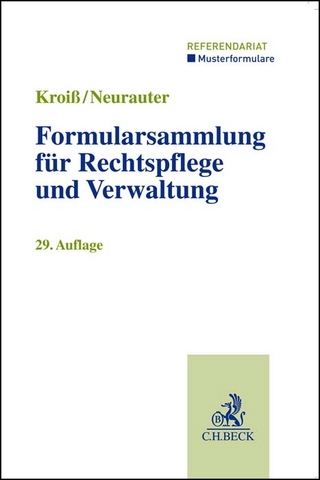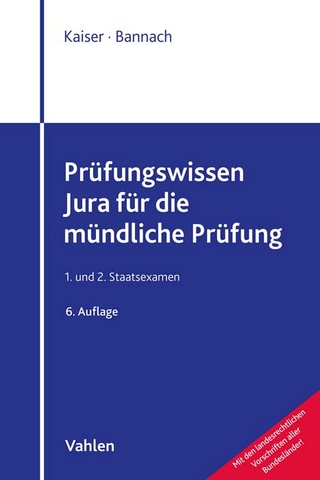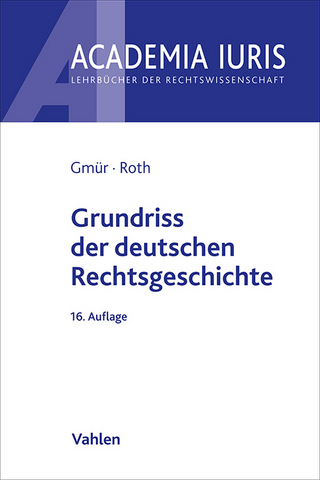
The Constitutional System of the Hong Kong SAR
Hart Publishing (Verlag)
978-1-5099-5633-3 (ISBN)
The British colony of Hong Kong, one of the “Four Little Dragons” of East Asia, reverted to Chinese rule in 1997. Since then, Hong Kong has continued to be an international financial centre, a free market, and a cosmopolitan city. At the same time, the tensions and contradictions inherent in “One Country, Two Systems” have given rise to constitutional controversies and social movements, culminating in the Umbrella movement of 2014, the anti-extradition law movement of 2019, the enactment of a National Security Law in 2020, and the electoral overhaul of 2021. This book discusses the structure and operations of Hong Kong’s legal, judicial and political systems and their interactions with the national authorities of the PRC.
The book provides a useful case study in comparative constitutional law, especially on autonomy and devolution issues within sovereign States. This comparative study is particularly interesting because Hong Kong is a common law jurisdiction within the PRC’s socialist legal system. It will therefore be of interest to students and scholars of Chinese law, Hong Kong law and comparative politics, as well as lawyers whose practice involves Hong Kong.
Albert Hung-yee Chen is Professor of Law at the Centre for Chinese Law, The University of Hong Kong. Po Jen Yap is Professor at the Faculty of Law, The University of Hong Kong.
Preface
Table of Cases
Table of Legislation
1. Hong Kong’s Constitutional Journey
I. Hong Kong before the 1980s
II. Negotiation of the Sino-British Joint Declaration
III. Drafting of the Basic Law
IV. Developments in Colonial Hong Kong in the 1990s
V. Major Constitutional and Legal Developments in the HKSAR
A. Aborted Attempt to Implement Article 23 of the Basic Law, 2002–03
B. Interpretations of the Basic Law by the National People’s Congress Standing Committee, 1999–2016
C. Pace of Democratisation, 2003–15
D. Failed Attempt to Introduce an Extradition Bill, 2019
E. Beijing’s Interventions on National Security Law and Electoral Reform, 2020–21
VI. Conclusion
Further Reading
2. The Autonomy of the HKSAR and the Powers of the Central Authorities
I. The Concept of Autonomy
II. The PRC Constitution and the Basic Law
III. The Continuity of Laws
IV. ‘Plenary Power’ and ‘Patriots Ruling Hong Kong’
V. The Powers of the HKSAR
VI. The Powers of the Central Authorities
A. The First Interpretation
B. The Second Interpretation
C. The Third Interpretation
D. The Fourth Interpretation
E. The Fifth Interpretation
F. The ‘Decision-Making’ Power of the NPCSC
G. The ‘Decision-Making’ Power of the NPC
H. Application of National Laws to the HKSAR
VII. Conclusion: An Analysis of ‘One Country, Two Systems’
Further Reading
3. The Political System: The Executive and the Legislature
I. Hong Kong’s Political System: From Colony to SAR
II. The Chief Executive
A. Executive Orders
B. Emergency Powers
C. Dual Accountability
III. The Executive Council
IV. Principal Offi cials, Bureaux and Departments
V. Access to Information
VI. The Legislative Council
A. The Legislature and the Executive
B. ‘Separate Counting’ Mechanism and Private Members’ Bills
C. Powers and Functions
VII. Independent Agencies
VIII. Conclusion
Further Reading
4. The Political System: Electoral Politics and Constitutional Changes
I. The Electoral System
II. Political Polarisation in Hong Kong
III. The ‘Ruling Coalition’ in the HKSAR
IV. The Dynamics of Constitutional Reform
V. The Electoral Overhaul of 2021
A. ‘Patriots Ruling Hong Kong’
B. The Policy Behind the Electoral Reform
VI. Conclusion
Further Reading
5. Constitutional Role of the Judiciary
I. Structure, Organisation and Composition of Hong Kong’s Courts
II. Constitutional Review of Local Legislation
III. Judicial Review of the Central Authorities’ (NPC/NPCSC) Acts
IV. Judicial Treatment of NPCSC Interpretations
V. Retrospective Effect of NPCSC Interpretations
VI. Constitutional Signifi cance of the NPCSC’s Power of Interpretation
VII. ‘Separation of Powers’ or ‘Executive-Led Government’?
VIII. Conclusion: Coexistence of ‘Separation of Powers’ and ‘Executive-Led Government’
Further Reading
6. Constitutional Rights
I. The Basic Law and the Hong Kong Bill of Rights Ordinance
A. Ng Kung Siu and Article 39 of the Basic Law
B. Article 39 of the Basic Law Post-Ng Kung Siu
II. Effect of ICCPR Reservations and Section 11 of the BORO
III. Judicial Use of Comparative Law
IV. Proportionality Analysis
V. CFA During Chief Justice Andrew Li’s Tenure
A. Central–HKSAR Constitutional Relations
B. Law and Order
C. Declarations of Invalidity
VI. CFA During Chief Justice Geoffrey Ma’s Tenure
A. Central-HKSAR Constitutional Relations
B. Law and Order
C. Express Findings of Unconstitutionality
D. Constitutionality of Electoral Restrictions
VII. CFA During Chief Justice Andrew Cheung’s Tenure
VIII. Conclusion
Appendix: List of CFA Cases with Express Findings of Unconstitutionality
Further Reading
7. Constitutional Remedies
I. Invalidation of Unconstitutional Laws
II. Advisory Review or Provisional Determination
III. Remedial Interpretation
IV. Suspension Order
V. Invalidation of Constitutional Law
VI. Conclusion
Further Reading
8. Conclusion
I. A New Narrative for the ‘Hong Kong Story’
II. ‘Free Market Constitutionalism’ in Hong Kong
III. Xi Jinping’s Speech on 1 July 2022
IV. Brief Overview of 25 Years of the HKSAR
V. Conclusion
Further Reading
Index
| Erscheinungsdatum | 03.04.2024 |
|---|---|
| Reihe/Serie | Constitutional Systems of the World |
| Verlagsort | Oxford |
| Sprache | englisch |
| Maße | 138 x 216 mm |
| Themenwelt | Recht / Steuern ► Allgemeines / Lexika |
| Recht / Steuern ► EU / Internationales Recht | |
| Recht / Steuern ► Öffentliches Recht | |
| ISBN-10 | 1-5099-5633-6 / 1509956336 |
| ISBN-13 | 978-1-5099-5633-3 / 9781509956333 |
| Zustand | Neuware |
| Haben Sie eine Frage zum Produkt? |
aus dem Bereich


